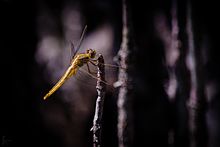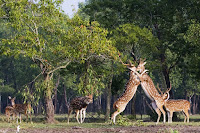Nijhum Dwip

| Nijhum Island | |
|---|---|
 |
|
| Coordinates: 21°35′0″N 92°01′0″E | |
| Country | |
| Administrative District | Noakhali District |
| Area | |
| • Total | 163.45 km2 (63.11 sq mi) |
| • Land | 38.65 km2 (14.92 sq mi) |
| • Water | 124.81 km2 (48.19 sq mi) |
| Population | |
| • Total | 1,536 |
| Time zone | BST (UTC+6) |

Life at Nijhum Dwip.
A cluster of islands (mainly, Ballar Char, Kamlar Char, Char Osman and Char Muri) emerged in the early 1950s as an alluvium in the shallow estuary of the Bay of Bengal on the south of Noakhali. These new sandbanks first drew the notice of a group of fishermen, who named it Baular Char (literally, the alluvium of sand) later transformed into Ballar Char. Occupying an area of 14,050 acres (5,686 hectares), the island is situated between 21 0 1 / to 22 0 6 /North latitude and 90 0 3 / to 91 0 4 / East longitude
Migratory Birds in Nijhum Dwip: During winter, thousands of migratory birds flock in to island. The fishermen use the airy and sunny land as an ideal place for drying their catches from the sea. Sometimes many of them also construct straw huts on the island as seasonal residences.
In 1974 the Forest Department took an afforestation program for a duration of twenty years in the north side of the island. Covering an area of nine thousand acres, it has now developed into a deep forest with a variety of plant species. Among the trees Keora is much seen. Besides this Gewa, Kankra, Bain, Babul, Karamja, Pashur and many other species are seen.
On 8 April 2001 the government declared the 40,390 acres (16,345 ha) of forest of Jahajmara range including 9,550 acres (3,865 ha) of forest land on Nijhum Dwip as a National Park for the protection and development of the biodiversity of the forest. But in practice, there a very lazy appearance of that declaration.
It was named 'Nijhum Dwip' by former Minister Amirul Islam Kalam in 1979 observing its isolation and mild nature.
Population
The population in Nijhum Dwip in 2001 was 15,670. Their main occupations are cultivation, fishing and livestock farming. The island produces vegetables. But the island suffers from natural calamities, and life is hard and risky.Current status
Nijhum Dwip presently has six big bazaars that mainly consist of grocery shops, small restaurants and drug stores. These bazaars are the only places in the islands to have electricity from generators. More than eight (8) thousand inhabitants found their permanent settlement in the island and their occupations are mainly cultivation and fishing. There are some NGO's and other organisations like Proshika, Human Development Centre and JAICA who are involved with their development projects on this island.Accommodation
While in Nijhum Dwip one can stay at any of several hotels. Some of them have electricity supplied by generators. Bangladesh Parjatan Corporation also has a hotel there which is the earliest of all.Flora & Fauna

Wandering glider from coastal Bangladesh, found at Nijhum island, Hatiya.

No comments:
Post a Comment